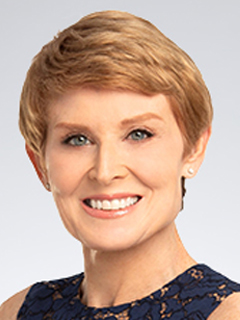Inflation slows upward creep
Service sector inflation proves sticky.

October 24, 2025
The consumer price index (CPI) rose 0.3% in September from August and 3.0% from a year ago. That is the hottest annual pace since the beginning of this year. Data in the more recent months was revised up slightly. This could be the last solid data point on inflation for months as the government shutdown stopped data collection October 1. Staffing shortages already meant that more than a third of the index was imputed instead of actually sampled.
Energy prices accelerated while food prices moderated a bit, more at restaurants than at the grocery store. Major proteins, except for beef, fell during the month. Coffee prices were off slightly but still up 18.9% from a year ago. Prices at the gas pump jumped 4.1% in September, the fastest monthly increase in more than two years, but they were still down 0.5% from a year ago.
Electricity costs surprised to the downside, falling 0.5% in September but still up 5.1% from a year ago. Piped natural gas service fell during the month but gained 11.7% from a year ago. Oil prices jumped this week in response to additional sanctions on Russian oil producers.
Core CPI, which strips out the volatile food and energy components, rose 0.2% on the month and 3% from a year ago. That was lower than the 3.1% annual gain in August. A sharp slowdown in shelter outside hotel room rates helped to cool core inflation measures. Shelter costs play an outsized role in the compilation of the CPI relative to the Federal Reserve’s preferred core PCE (personal consumption expenditures) measure of inflation.
Core goods prices rose 0.2% in September after stripping out oil. That is the fourth consecutive monthly increase in goods prices. They fell in the first quarter. Goods deflation is the primary reason that inflation remained subdued pre-pandemic.
The median price of a new vehicle topped $50,000 in September, a new record. New vehicle prices rose 0.2%, after rising 0.3% in August. New vehicle prices are up 0.8% from a year ago, the largest increase in almost two years. The pool of those who can afford a new car has shrunk post-pandemic. Rate cuts by the Fed should alleviate some of the upward pressure on vehicle prices along with relief on tariffs from the White House. Current tariffs leave many domestic producers at a disadvantage relative to imports due to tariffs on inputs. That is the opposite of stated goals.
Used vehicle prices fell but still added 5.1% compared to a year ago, which was slower than August but still elevated. Computers, accessories, parts and smart phones fell in price. High-tech goods are some of the few places that are not only shielded from tariffs but have been discounted by foreign producers to preserve market share.
Conversely, prices moved up on furniture, appliances and apparel. Furniture and appliances are showing the effects of actual and threatened tariffs. The bulk of the increase on tariffs on furniture went into effect on October 14. Another tranche of tariffs on furniture are due on January 1, 2026. Apparel prices are starting to move up with the end of de minimis shipments in May for China and all other countries September 1.
The super core services component of the index, which strips out shelter costs, rose 0.4% and was up 3.2% from a year ago. That is off slightly from the 3.3% year-over-year gains last month, but still a full percentage point above the pace of 2019, when prices were less in front of mind. Insurance costs were mixed, although we know there is more in that pipeline.
The care economy is seeing prices rise more rapidly due to pockets of labor shortages – immigrants play a larger role in the care economy. Day care and childcare costs increased 1.7% during the month, the most since September 2023, and the third highest on record. Elder care at home jumped 7% during the month, its fastest on record. The data dates to 2006.
The Fed's Beige Book for October revealed "opportunistic pricing" - price hikes due to the lack of competition triggered by tariffs - and some stickiness in service sector inflation. The larger issue is the shutdown and the weakness it is causing, which are adding to the pressure on margins due to tariffs. The Fed will cut rates by a quarter point next week, but it is unclear how much cuts will stimulate the economy while the shutdown persists.
The White House has warned that inflation data for October is unlikely to be gathered, given that the month is almost over. It is easier to backfill employment and spending than pricing data.
The inflation data was slightly better than expected, which helps shore up the Fed’s near-term commitment to focus more on the labor market and cut rates.

Diane Swonk
KPMG Chief Economist
Bottom Line
The inflation data was slightly better than expected, which helps shore up the Fed’s near-term commitment to focus more on the labor market and cut rates in October and December. The problem is that lower short-term rates cannot offset the squeeze on payrolls and spending associated with the government shutdown, which is rapidly expanding to contractors as well as federal workers. Some federal workers have been warned that the shutdown could last until December, which adds to the weakness many surveys have already revealed when it come to the holiday shopping season.
Explore more

Pricing pressures intensify in August
Inflation and unemployment are creeping up in tandem.

KPMG Economics
A source for unbiased economic intelligence to help improve strategic decision-making.

Policy in Motion: Insights for navigating with confidence
Your resource for the latest on trade, tariff and regulatory policy changes.
Subscribe to insights from KPMG Economics
KPMG Economics distributes a wide selection of insight and analysis to help businesses make informed decisions.
Meet our team
